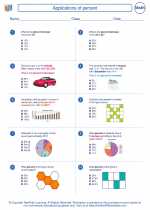What is Convection?
Convection is the transfer of heat through the movement of a fluid, such as air or water. This process occurs when a fluid is heated, causing it to become less dense and rise, while cooler, denser fluid sinks to take its place.
Key Terms and Concepts
- Fluid: A substance that flows, such as liquids and gases.
- Density: The measure of mass per unit volume.
- Heat transfer: The movement of heat from one object to another.
How Convection Works
- Heating: When a fluid is heated, it gains energy and its particles move faster, causing the fluid to expand and become less dense.
- Rising: The less dense, heated fluid rises, carrying heat with it.
- Cooling: As the heated fluid rises, it comes into contact with cooler surroundings, causing it to release heat and become denser.
- Sinking: The denser, cooler fluid sinks, displacing the warmer fluid and completing the convection cycle.
Examples of Convection
- Atmospheric Convection: The rising of warm air and sinking of cool air that drive weather patterns, such as the formation of thunderstorms and wind circulation.
- Oceanic Convection: The movement of warm and cool ocean currents due to differences in water density, influencing global climate patterns and marine life distribution.
- Mantle Convection: The slow movement of molten rock in the Earth's mantle, driving plate tectonics and influencing volcanic activity.
Application of Convection
- Heating and Cooling Systems: Convection is utilized in various heating and cooling systems, such as radiators and air conditioners, to transfer heat and regulate temperature.
- Cooking Methods: Convection ovens use the circulation of hot air to cook food more evenly and efficiently.
- Geological Processes: Convection in the Earth's mantle drives the movement of tectonic plates and influences the Earth's surface features.
[Convection] Related Worksheets and Study Guides:
.◂Math Worksheets and Study Guides Eighth Grade. Applications of percent
Study Guide Applications of percent
Applications of percent  Worksheet/Answer key
Worksheet/Answer key Applications of percent
Applications of percent  Worksheet/Answer key
Worksheet/Answer key Applications of percent
Applications of percent  Worksheet/Answer key
Worksheet/Answer key Applications of percent
Applications of percent  Worksheet/Answer key
Worksheet/Answer key Applications of percent
Applications of percent 

 Worksheet/Answer key
Worksheet/Answer key
 Worksheet/Answer key
Worksheet/Answer key
 Worksheet/Answer key
Worksheet/Answer key
 Worksheet/Answer key
Worksheet/Answer key

The resources above cover the following skills:
Number and Operations (NCTM)
Understand numbers, ways of representing numbers, relationships among numbers, and number systems.
Work flexibly with fractions, decimals, and percents to solve problems.